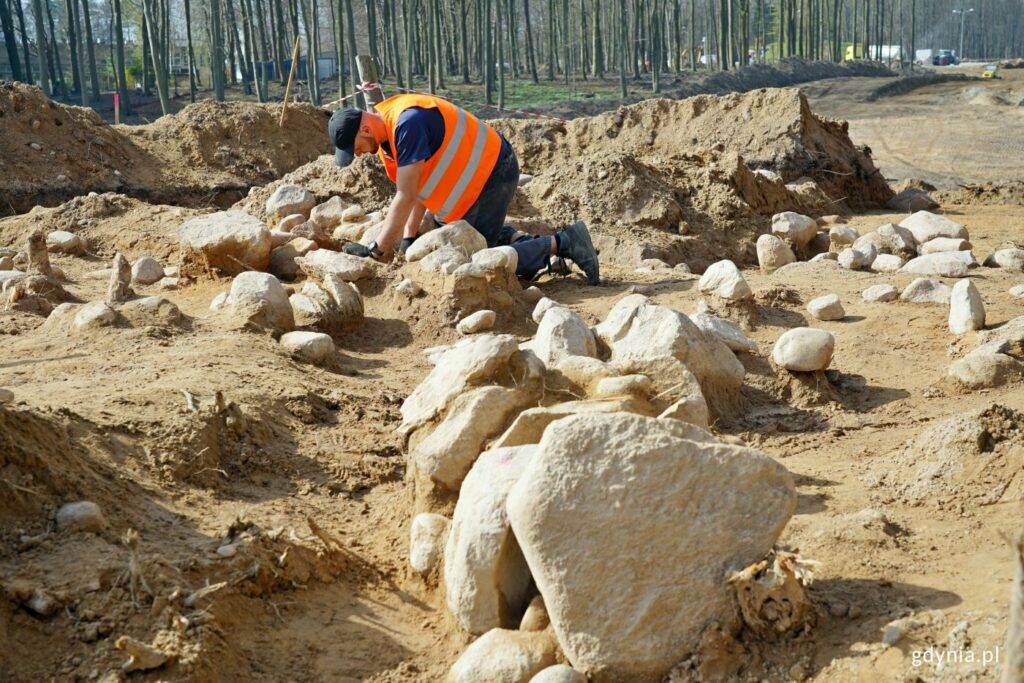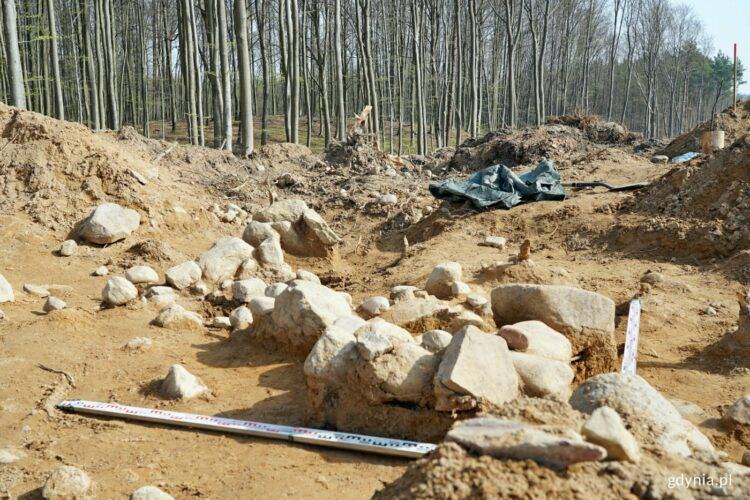Construction of a new bypass road in Gdynia has led to the unexpected discovery of prehistoric burial mounds estimated to be over 2,500 years old. Archaeologists working at the site near the Witomino district uncovered three kurhany (burial mounds), revealing seven graves linked to the Lusatian and Pomeranian cultures of the late Bronze and early Iron Ages.
This is the first systematic study of such burial structures within the city’s boundaries, offering rare insights into the area’s ancient human activity.
Significant Archaeological Findings
The discovery was made during rescue excavations initiated in advance of the bypass route intersecting with known archaeological areas. Researchers unearthed several types of burial structures, including stone cist graves and simple cremation pits.
In one of the mounds, a stone-lined grave contained a single urn burial believed to be associated with the Lusatian culture. This culture flourished in the region from around 1300 BCE to 500 BCE and is characterized by its use of urnfield cemeteries and defensive settlements.
Above this primary grave, a second cremation burial was found, suggesting that the mound had been reused by later inhabitants, potentially centuries apart.
The second mound produced further burials attributed to the Pomeranian culture, which succeeded the Lusatian and was active during the 7th to 5th centuries BCE. Among the artifacts discovered was a face urn—a ceramic vessel bearing stylized human facial features, which is a defining element of Pomeranian funerary practices.
The third mound yielded more ceramic fragments and cremated human remains, with research ongoing.

In addition to the graves, archaeologists found a bronze socketed axe in the surrounding area, possibly deposited as part of a ritual offering.
Historical and Cultural Context
Experts believe that the burial mounds represent a continuity of sacred practices across cultural transitions. The reuse of the same site by successive groups suggests the location held enduring spiritual significance.
Maciej Stromski, the lead archaeologist overseeing the excavation, noted: “The graves from different periods layered atop one another reveal a deep respect for these sites. They were seen not only as burial grounds but also as sacred spaces, perhaps linked to local beliefs about continuity and connection with the past.”
The Lusatian culture, which spanned large parts of present-day Poland, Germany, and the Czech Republic, is notable for its advanced metallurgy and organized social structures. Its successor, the Pomeranian culture, retained many burial traditions but introduced new symbolic forms, such as the anthropomorphic urns.
Impact on Construction and Preservation Efforts
Construction on the portion of the Witomino bypass intersecting with the burial site has been temporarily halted to allow further excavation and documentation. Archaeologists estimate that their work will continue for another two to three weeks. The site is currently protected to prevent disturbance or damage.
City authorities have expressed support for the archaeological work and confirmed that efforts will be made to preserve the most significant finds. A spokesperson from Gdynia’s municipal office indicated that selected artifacts may be displayed in local museums or used in educational programs to highlight the region’s early history.
Construction on other sections of the bypass, which is designed to alleviate traffic congestion in the area, will continue as scheduled.
Broader Implications for Polish Archaeology
The discovery adds to a growing list of prehistoric sites uncovered in northern Poland in recent years. The region is known for its rich archaeological potential, but urban development often restricts access to untouched locations.
This case underscores the importance of integrating archaeological assessments into infrastructure planning. As Poland continues to expand its transport network, safeguarding cultural heritage remains an essential part of responsible development.
The discovery of these ancient burial mounds in Gdynia offers a rare opportunity to explore the funerary customs of early cultures in northern Poland. Artifacts linked to the Lusatian and Pomeranian traditions not only illustrate the continuity of sacred sites but also provide a tangible connection to the distant past.
With further analysis and conservation work ahead, researchers hope to deepen their understanding of the people who once inhabited the area, and how their beliefs and practices shaped the cultural landscape we see today.


















